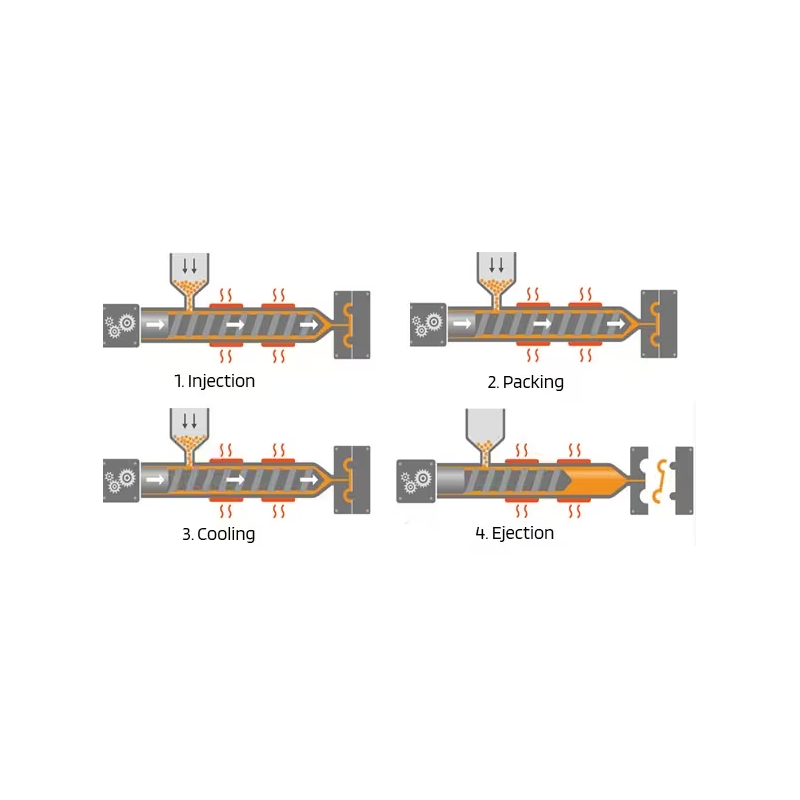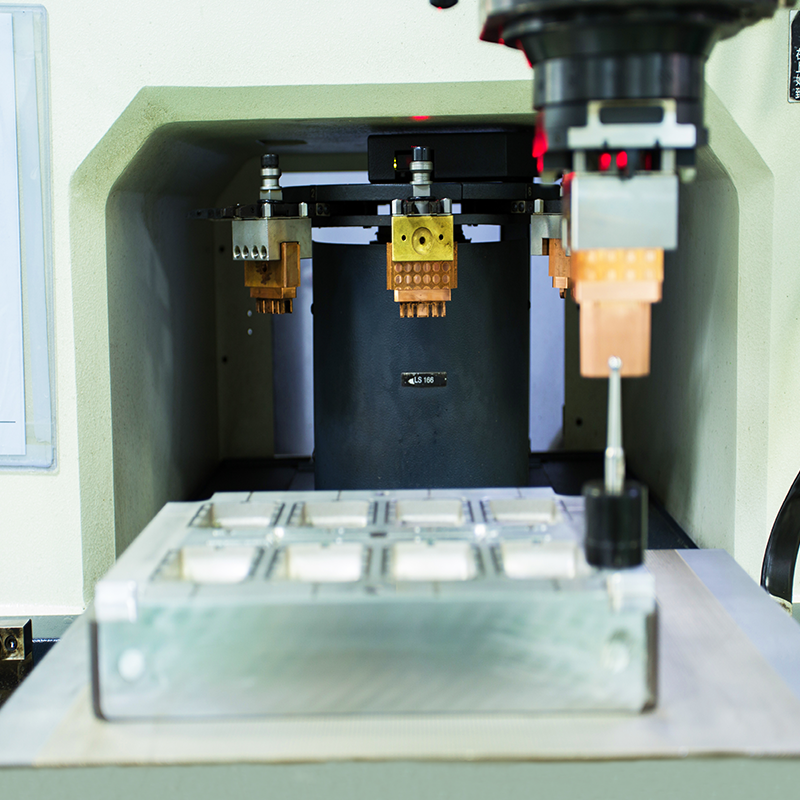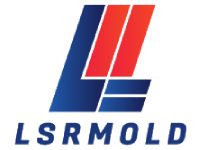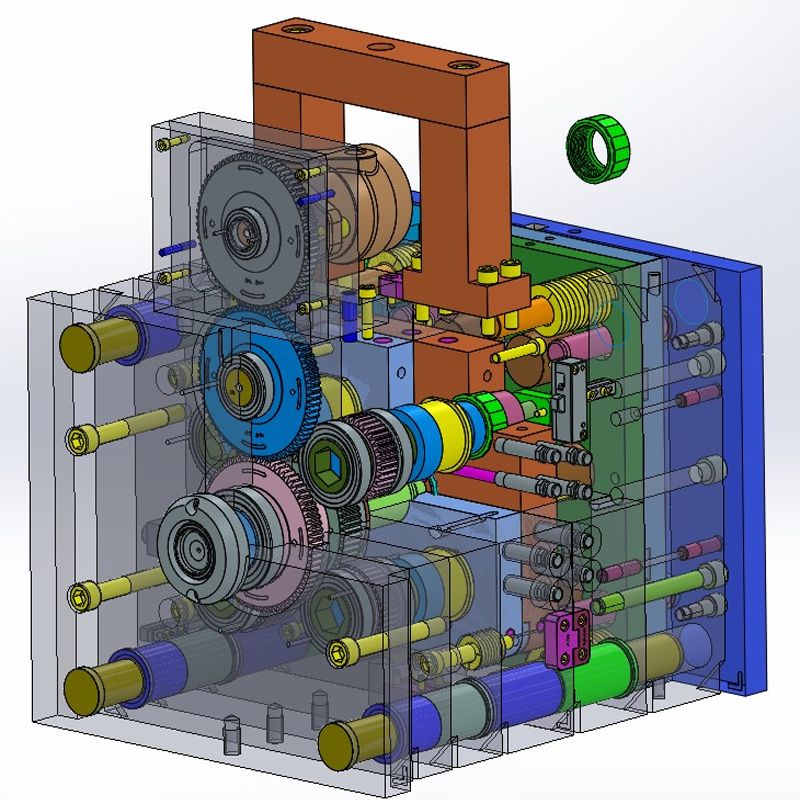At LSRmold, we frequently encounter inquiries about the time it takes to complete an injection molding process. For manufacturers and product designers, understanding the cycle time is essential for streamlining production and meeting deadlines. Injection molding is a highly efficient manufacturing process, but the time required for each cycle can vary significantly based on several factors, including material properties, mold complexity, and machine settings.
In this post, we’ll dive into the details of the injection molding process, break down the different stages involved, and discuss the critical factors that impact cycle time. Whether you’re considering your first injection molding project or seeking ways to optimize your current production line, this blog will provide the essential information to help you make informed decisions and improve manufacturing efficiency.
Key Stages of the Injection Molding Process
Before we dive into the factors that influence cycle time, it’s important to understand the basic stages of the injection molding process. Each stage plays a crucial role in the overall production timeline:
- Mold Design and Prototyping
- Mold Fabrication and Testing
- Injection Molding Cycle
Each of these stages requires careful planning, precision, and timing. By optimizing each phase, manufacturers can improve overall efficiency, reduce cycle times, and avoid costly delays.

-
Mold Design and Prototyping: Setting the Stage for Efficiency
The first step in the injection molding process is mold design. This stage involves creating a precise digital design of the product using Computer-Aided Design (CAD) software. The CAD model serves as the foundation for creating the mold, and ensuring the design is both functional and manufacturable is crucial for minimizing production delays.
– Prototype Development: Once the mold design is finalized, a prototype may be created using rapid tooling techniques like 3D printing or CNC machining. This allows designers to quickly assess the part’s fit, function, and manufacturability. Rapid prototyping can help identify design flaws early on, avoiding delays once the final mold is in production.
– Estimated Lead Time: Depending on the complexity of the part and the design’s intricacy, this phase can take anywhere from 1 to 4 weeks.
During this stage, close communication between the design and manufacturing teams is key to avoiding unnecessary iterations and revisions that could extend the timeline.

-
Mold Fabrication and Testing: Precision at Every Step
Once the mold design is finalized, fabrication begins. This stage involves using advanced machinery like CNC mills and Electrical Discharge Machining (EDM) to create the mold cavity. Mold fabrication requires precision, as any errors at this stage can result in defective parts and delays during the production cycle.
– Fabrication Process: The mold is typically made from high-quality steel or aluminum, with the material choice depending on factors like part complexity and expected production volume. For complex designs, multi-cavity molds and additional components like lifters or sliders may be required to achieve the desired part design.
– Mold Testing: After fabrication, the mold undergoes testing to ensure it meets the design specifications. This phase can reveal potential issues such as improper cooling or uneven material flow. Any necessary adjustments are made to optimize performance before full-scale production begins.
– Estimated Lead Time: Depending on the complexity of the mold and its features, the fabrication and testing process can take anywhere from 2 to 12 weeks.
This phase is critical to ensuring that the mold performs consistently, which will directly impact cycle time once production begins.

-
Injection Molding Cycle: The Production Phase
The actual injection molding process involves a series of stages that take place within the mold machine:
- Injection: Raw plastic pellets are heated until they melt and are then injected into the mold cavity at high pressure. The speed and pressure of injection can vary depending on the material and part design.
- Packing: Once the mold is filled, additional material is injected into the cavity to compensate for material shrinkage that occurs during cooling. This ensures that the part retains its intended shape and size.
- Cooling: The material must cool and solidify inside the mold. Cooling time is the most time-consuming part of the cycle, with thicker parts requiring longer cooling times.
- Ejection: After the part has cooled, the mold opens and the part is ejected using ejector pins or a similar mechanism.
– Cycle Time: The time for each cycle generally ranges from 10 seconds to 2 minutes, depending on several factors such as the part’s size, complexity, and material.
– Factors Affecting Cycle Time: The length of the cycle is influenced by factors like the size and complexity of the part, the material’s cooling rate, and the type of mold used. Larger, thicker parts or complex designs with multiple cavities can extend the cycle time, whereas smaller, simpler parts generally require less time.
Factors Influencing Injection Molding Cycle Time
Understanding the factors that affect cycle time is crucial for optimizing the process and achieving faster production rates. Some key variables include:
-
Material Type and Properties:
– Materials with higher melting points generally require longer injection and cooling times.
– The viscosity of the material impacts how quickly it can flow into the mold. Materials with higher viscosity may take longer to inject.
– Cooling rates vary by material; some materials cool faster than others, directly impacting the time needed for solidification.
-
Mold Complexity:
– Molds with more intricate designs, complex geometries, or multiple cavities require longer cycle times. This includes factors like the length of flow paths and the design of the cooling system within the mold.
– Efficient cooling channels, for example, can significantly reduce the time required to cool parts.
-
Part Size and Wall Thickness:
– Larger parts with thicker walls take longer to cool and inject, extending the overall cycle time. Parts with thinner walls will generally cool and fill faster, reducing the time needed for each cycle.

-
Machine Settings and Technology:
– The type of injection molding machine used can greatly influence cycle time. Machines with higher clamping forces, faster injection speeds, and advanced control systems can reduce cycle time significantly.
– Using machines that allow for simultaneous injection and ejection can also streamline production and reduce downtime.

-
Production Volume:
– For high-volume production runs, cycle times can be optimized through machine settings and tooling design. However, initial setup and mold changes may add time to the overall lead time.
Strategies to Reduce Injection Molding Time
Reducing cycle time without sacrificing quality is critical for improving production efficiency and cutting costs. Here are some proven strategies:
- Optimize Cooling Time: Use advanced cooling systems, like conformal cooling channels, to enhance heat transfer and reduce cooling times. This can result in faster part production and improved efficiency.
- Improve Mold Design: Simplify part geometry and ensure efficient gate placement to improve material flow, reducing both injection and cooling times. Using multi-cavity molds can also optimize production for high-volume runs.
- Use Advanced Machinery: Invest in machines with faster cycle speeds, improved temperature control, and better injection accuracy. These machines help reduce both cycle time and maintenance costs.
- Regular Maintenance: Keep machinery and molds well-maintained to avoid unnecessary downtime and ensure consistent performance throughout the production process.

Conclusion
At LSRmold, we specialize in providing high-quality injection molding solutions tailored to meet your production needs. Whether you’re looking to improve cycle times, optimize mold design, or select the right materials for your project, our team is here to guide you every step of the way. By understanding the factors that affect injection molding and implementing strategies to reduce cycle time, you can ensure your projects are completed on time and within budget.
If you’re looking for ways to streamline your injection molding process or have any questions about our services, don’t hesitate to reach out to our team. We’re committed to helping you improve production efficiency and achieve optimal results for your injection molded parts.
Contact us today at LSRmold for a consultation or request a quote. Let’s work together to enhance your production process and ensure that your projects are delivered on time, every time!

